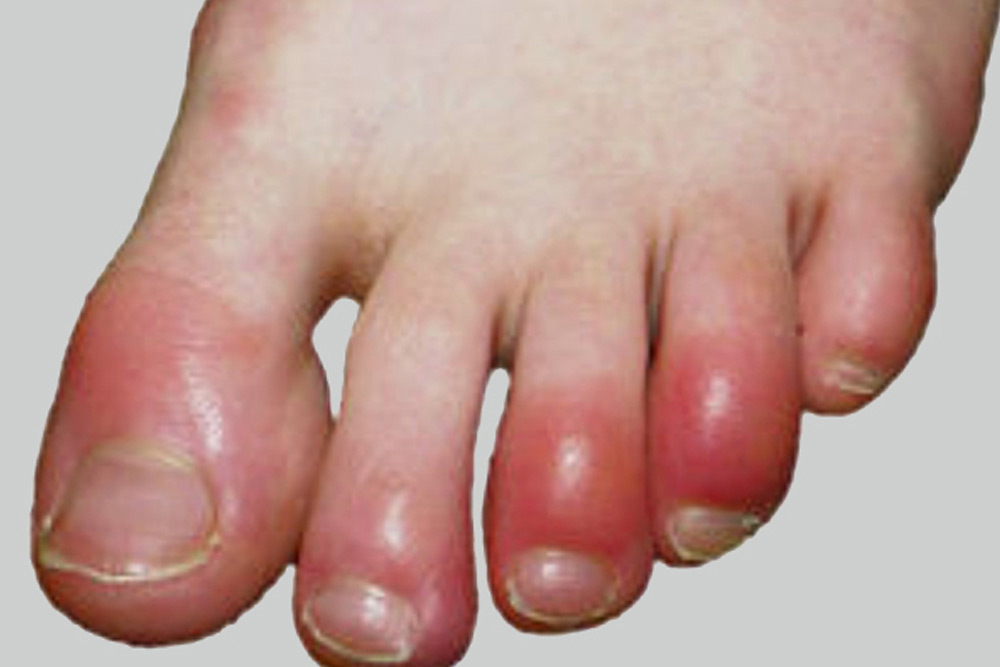Chilblains are a painful inflammation that often occurs in the toes due to sudden changes in temperature such as putting cold feet onto a heater or hot water bottle. They are characterized as swollen, itchy skin that is often blue, red or white in appearance; and they can involve burning sensations or blistering. Chilblains do not permanently damage the tissue however in serious cases if left untreated can lead to ulceration. Often chilblains occur in individuals overly sensitive to changes in temperature or with poor circulation, such as children, the elderly or people with diabetes. Females or underweight individuals also have a higher susceptibility to chilblains than the general population.
The exact cause of chilblains is unknown however it is thought that they are associated with poor circulatory responses to changes in temperature. To respond to changes in temperature the circulatory system undergoes opening and closing of blood vessels to regulate the amount of heat that is lost via evaporation to the skin. When the vessels open and close to rapidly by-products from the blood are not removed and can lead to irritation of the skin.
Because chilblains are often associated with poor circulation it is important to exercise regularly to promote circulation. This can be as simple as getting off your desk and going for a walk every few hours; it is also important to avoid tight shoes as these can further contribute to reduced circulation.
Chilblains are also associated with winter as sudden temperature changes are common as individuals move from the cold outside to heated buildings. To help prevent the formation of chilblains individuals can ensure they are wearing suitable footwear for winter that doesn’t leak as well as warm socks (no thongs or sandals) and see a podiatrist for regular professional treatment and foot health checkups.
If you believe that you have been suffering chilblains and symptoms have not subsided for 2-3 weeks it is important to consult a podiatrist or GP for a medical opinion.
Treatment Tips:
- Avoid sudden temperature changes – resist the urge to place feet on the heater
- Perform gentle exercises to warm the body and promote blood flow
- If skin over chilblain is unbroken, rub deep heat into affected area to improve blood flow
- Visit podiatrist for reoccurring chilblains or if the skin is broken
